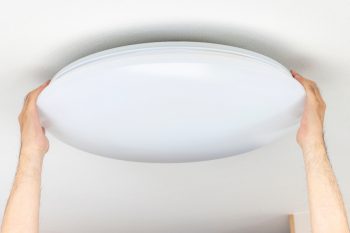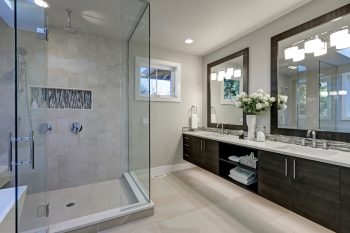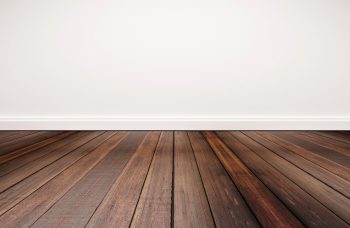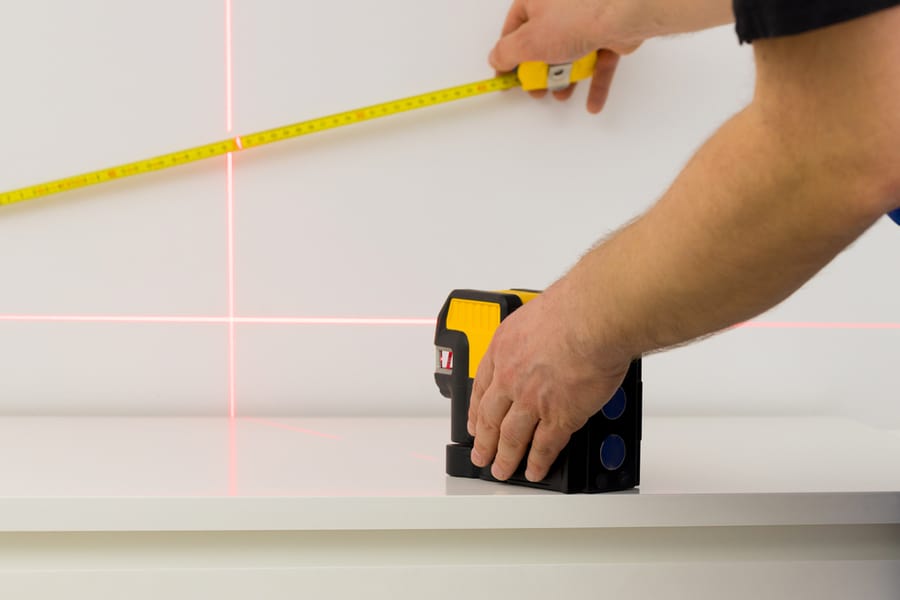
You will need to know the dimensions of a room in your home for many reasons.
Examples where you might measure the room, include buying enough material for a new floor or determining if a piece of furniture will fit the space.
As such, measuring room size is a skill that every DIYer should have.
When measuring a room, you will find its area. The area is the amount of space inside a 2D shape (in this case, the walls).
The area is always measured in a unit squared (square feet or square meters are most commonly used).
The formula for finding the area depends on the shape of the room.
- The area of a rectangle is equal to the length multiplied by the width (this is all you need for standard rooms).
- The area of a triangle is equal to the base multiplied by the height, then divided by two.
- Rarely you need to know how to find the area of a circle, which is the radius squared multiplied by Pi.
- These two shapes can be used together to find the area of non-standard rooms.
Let’s go over how to measure a standard room’s size (area) and how you would measure the area of a non-standard room. Then, I will discuss whether you should use metric or imperial measurements.
Measuring Rooms in Your Home

Many rooms in your home will be either rectangles or squares. These will be measured using method one.
However, non-standard rooms require a more complex method.
1. Measuring a Standard Rectangular Room

A standard-shaped room is the easiest to measure.
Supplies
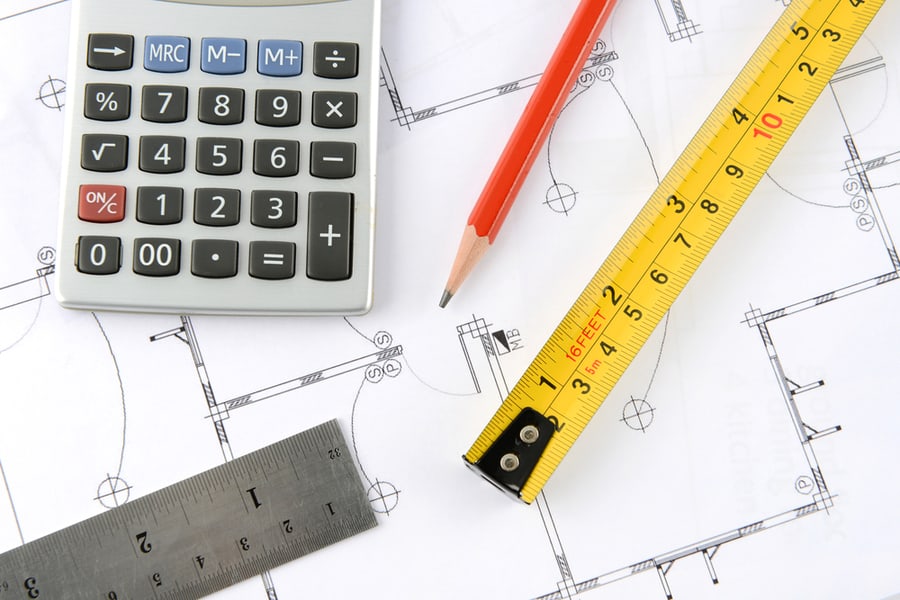
- A tape measure
- A pencil
- A piece of paper
- A calculator (optional)
Method

- Begin by clearing furniture and other obstacles away from two adjoining walls.
- Measure the longer wall (or pick one in square rooms) from end to end with the measuring tape.
- Write down the number on your paper with the pencil.
- Now, measure the other wall in the same manner.
- Write this number down on the paper with the pencil.
- Multiply the two numbers together (either with the calculator or by hand).
- Add the unit squared to the end of the final number.
2. Measuring a Non-Standard Room

Sometimes rooms are not built into neat shapes and have odd angles or compound shapes.
In this case, you will need to find the area of multiple room sections before adding them together.
Multiple Rectangles
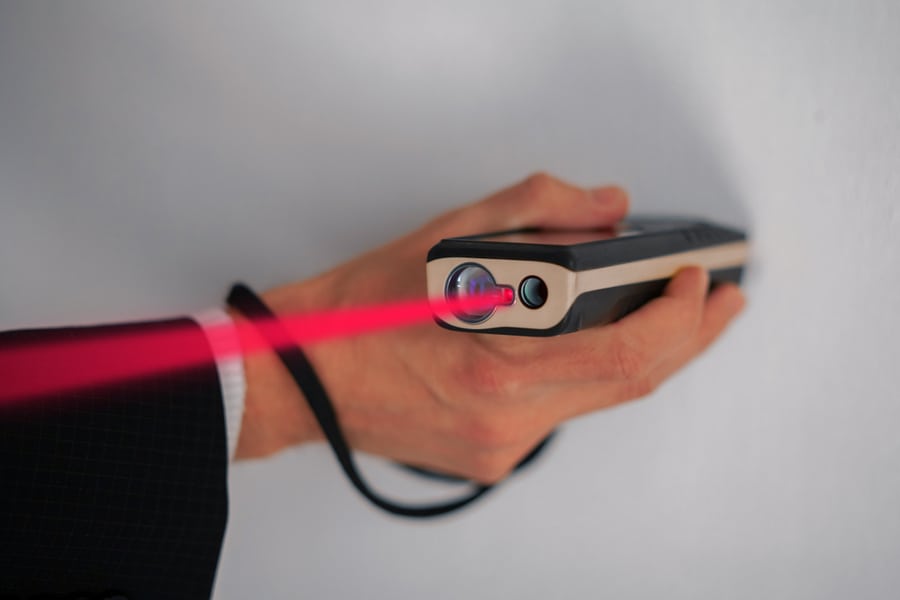
First, let’s talk about the most simple non-standard room, which consists of multiple rectangles.
Here is an example of such a room:
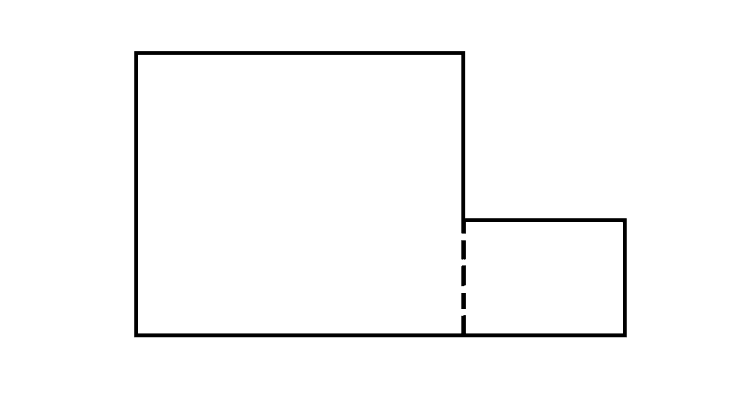
You can see the dotted line to divide the imaginary rectangles that make up the room.
To measure the area of this roomy, follow the steps in method one for each rectangle and then add the resulting areas together.
Triangles or Circles
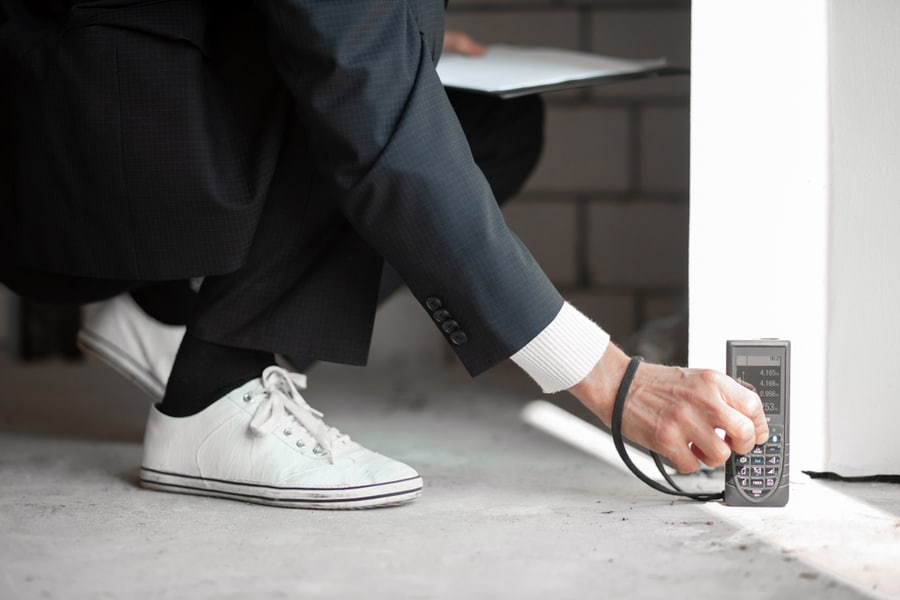
Very rarely, rooms will also be made up of triangles or circles.
These are the hardest rooms to measure because they require different formulas.
Here is a picture of a room of three shapes: a triangle, a rectangle, and a half-circle.
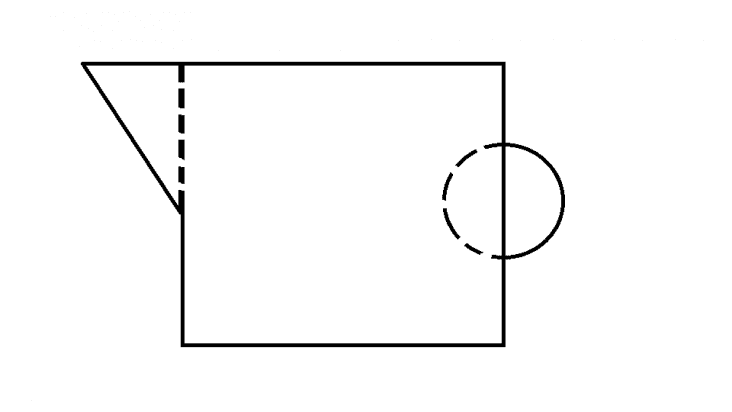
To find the area of a triangle, multiply the base by the height (the two non-diagonal sides) and then divide the result by two.
To find the area of the circle, you will measure the width of the circle at its widest point and divide it in half to find the radius.
Then, square the radius and multiply it by pi.
The result is the area of the circ; however, in this example, half of the area of the circle is outside the square and should be counted.
Finally, find the area of the square as you would in method one, and add all the resulting areas together.
Using this method, the shapes you measure will sometimes overlap (like the circle in the second example) with another shape.
For an accurate measurement, ensure you aren’t counting any space twice.
Measuring in Metric vs. Imperial
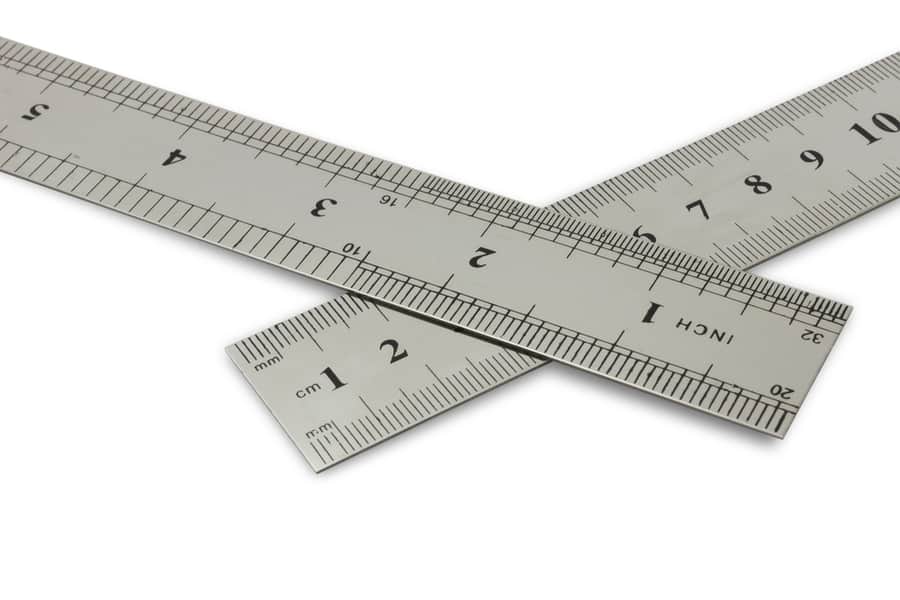
There is much debate about whether the area in square feet (imperial) or square meters (metric) is superior. The size of a room can easily be measured in either.
I would measure using whichever system you find easiest. Some reasons one system might be easier include:
- Your furniture or materials is measured in metric.
- The room is an odd measurement in one system but a round number in the other.
Conclusion
You can measure the area of any room using three simple formulas.
When measuring most rooms, you only need a formula for rectangles (LxW).
These formulas are the area formulas for rectangles, triangles, and circles.
Measuring in imperial or metric is up to personal preference as long as you are consistent.
Frequently Asked Questions
Can I Measure a Room Without a Tape Measure?
While not very accurate, you can get an idea of how big your space is using your wingspan.
When your arms are outstretched, the length from fingertip to fingertip usually equals your height in humans.
You can then see how many times your wingspan fits along two walls to get a rough estimate of the length and width.
These can be multiplied together for an area. This method should only be used if you do not need a precise value.
Can You Use Your Phone To Measure a Room?
There are many measuring apps on the market. However, I find that these are not very accurate.
The potential for the user or AI to make an error is too great to rely on them for delicate projects.
I would, however, use them when buying furniture, as long as you stay away from anything that would “barely” fit.
